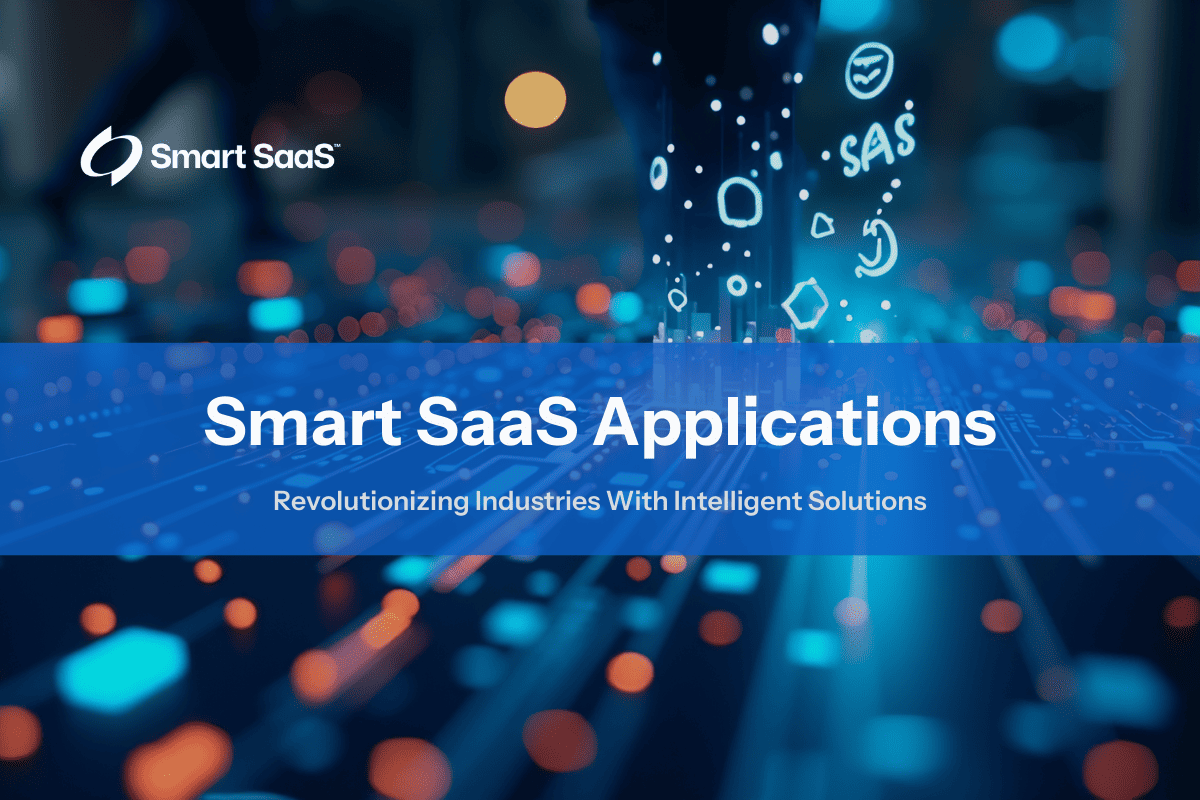

Friday, March 7, 2025
Kevin Anderson
Smart SaaS is reshaping the way businesses operate by delivering tailored, adaptive solutions for a wide range of industries—from SaaS for smart cities and smart lighting control to cutting‑edge eCommerce automation. Traditional, one‑size‑fits‑all subscription models are giving way to flexible, usage‑based pricing models that align costs with actual usage.
This shift not only saves companies money but also encourages them to optimize resources more effectively. Whether you’re looking to transform tenant experiences in property management, streamline operations with a SaaS smart sensor network management system, or boost online sales through Smart SaaS for eCommerce, the possibilities are practically limitless.
In this guide, we’ll explore the core principles behind Smart SaaS, illustrate how it is deployed across various industries, and show why Smart SaaS Quality of Experience (QoE) is vital to ensuring long‑term success. The future is here—and it’s more adaptive, agile, and customer‑centric than ever before.

The concept of “Smart SaaS” goes far beyond traditional cloud-based software. It is defined by its ability to integrate intelligence and adaptability into every aspect of its service. Unlike conventional SaaS solutions that rely on static subscription models, Smart SaaS employs usage‑based pricing, advanced data analytics, and real‑time adaptability.
This approach allows businesses to pay only for what they use, ensuring cost efficiency and better resource management. In addition, Smart SaaS platforms are designed with a strong focus on Quality of Experience (QoE), which means they continuously monitor performance metrics, user engagement, and system reliability to provide a superior experience.
Companies that embrace Smart SaaS enjoy benefits such as scalable infrastructure, dynamic pricing that adjusts with demand, and the flexibility to customize workflows to meet their specific needs. For instance, businesses transitioning from traditional models can learn about the evolution of cloud solutions by reading our article on what is SaaS.
“Smart SaaS” refers to Software as a Service platforms that transcend basic cloud hosting by incorporating intelligence, flexibility, and deep customization. Unlike traditional SaaS solutions that often rely on static subscription models, Smart SaaS uses usage‑based pricing, data analytics, and real‑time adaptability to meet evolving customer needs.
Key features include an adaptive pricing model where costs are tied to actual consumption, which not only saves money but also incentivizes efficiency. Furthermore, Smart SaaS platforms are customer‑focused, integrating real‑time analytics and advanced personalization techniques to continually refine the user experience.
This customer-centric approach is complemented by QoE‑driven strategies that monitor system performance, uptime, and engagement levels. For more insights into evolving digital strategies, check out our guide on digital transformation.
Smart SaaS platforms are distinguished by several core features that set them apart from traditional solutions:
These features not only drive operational efficiency but also enhance the overall customer experience, making Smart SaaS a dynamic and adaptable tool in today’s competitive marke


Smart SaaS applications are revolutionizing industries by offering intelligent, adaptive solutions tailored to specific operational needs. Whether it’s through optimizing energy usage in smart cities or enhancing online retail through personalized eCommerce automation, these platforms leverage real‑time data and advanced analytics to improve performance and efficiency.
The transformative power of Smart SaaS lies in its ability to integrate seamlessly into diverse environments, enabling businesses to make data‑driven decisions that enhance customer experience and streamline operations.
For example, smart lighting management systems and IoT sensor networks are being deployed to monitor and adjust resource consumption dynamically, resulting in significant cost savings and improved service quality. To explore more on industry-specific innovations, see our article on vertical SaaS.
SaaS smart lighting management systems use real‑time data to optimize energy usage, detect faulty fixtures, and adjust lighting based on occupancy or time of day. By leveraging sensors and wireless connectivity, these systems transform streetlights, office environments, and parking garages into components of a comprehensive smart lighting control network.
In industries ranging from agriculture to public health, sensor networks play a critical role in data collection. Smart SaaS applications for sensor network management offer centralized dashboards that aggregate data from various sensors—such as temperature, humidity, and air quality monitors—in real time.
Additionally, predictive maintenance capabilities use historical data to forecast failures, drastically reducing downtime. Explore more about integrating intelligent solutions with our post on understanding AI SaaS companies.
Online retailers are increasingly leveraging Smart SaaS to gain a competitive edge in the digital marketplace. These applications harness AI and advanced data analytics to automate customer journeys, provide personalized shopping experiences, and optimize inventory management.
For businesses looking to enhance operational efficiency and boost sales, Smart SaaS provides a powerful toolset that aligns with modern eCommerce strategies.
Property management is another sector reaping the benefits of Smart SaaS solutions. These systems centralize lease agreements, rent collection, maintenance requests, and tenant communications into one unified platform.
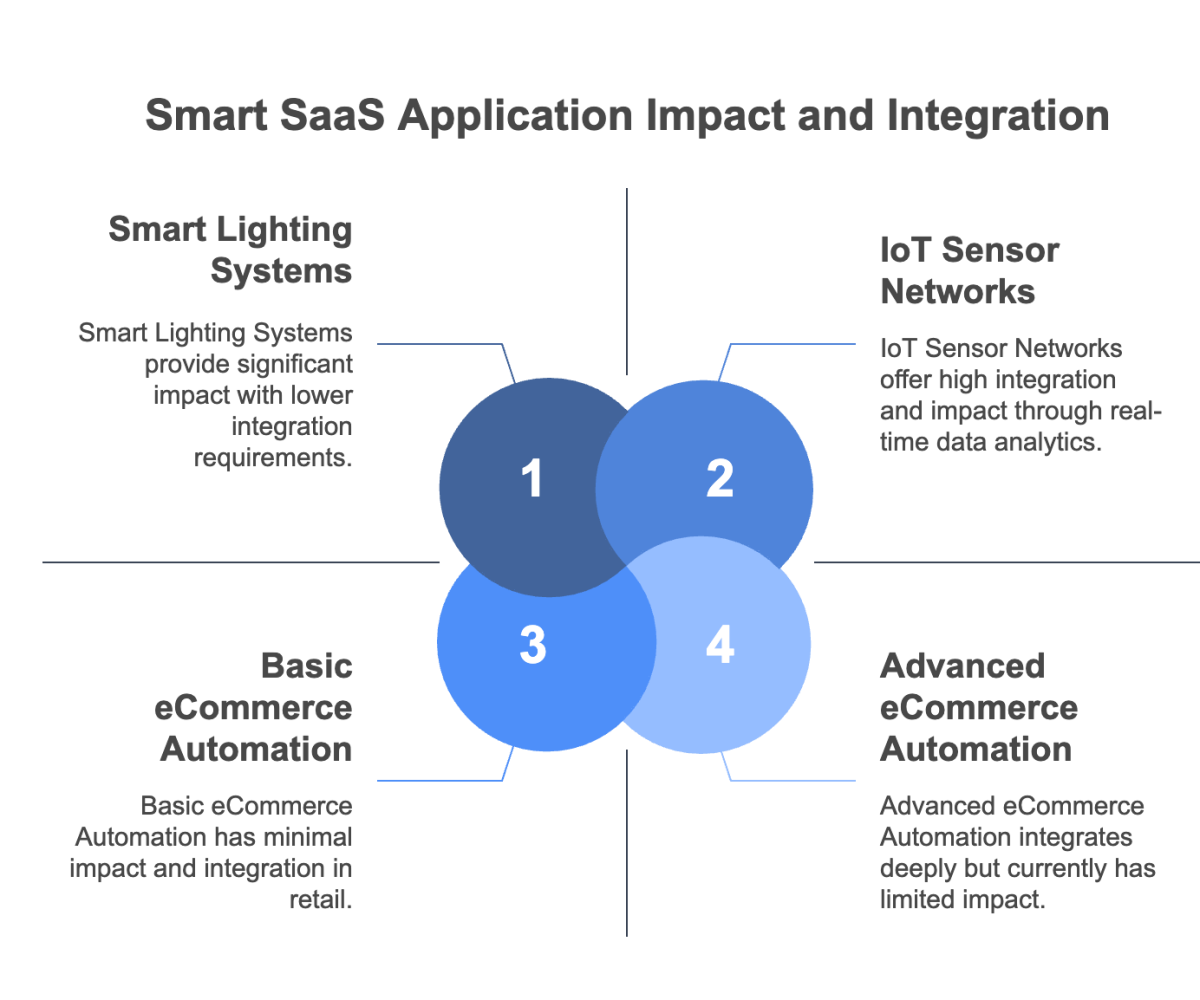

The traditional flat‑rate subscription model often charges a fixed fee regardless of actual usage, which can lead to inefficiencies and higher costs for businesses. In contrast, usage‑based pricing models have emerged as a more equitable alternative, aligning costs with actual resource consumption.
This pricing approach allows companies to pay only for the services they actively use, whether that be computing power, data storage, or transaction volume. Such a model is particularly advantageous for startups and growing businesses, as it reduces the initial financial burden and scales dynamically with usage. In addition, usage‑based pricing fosters transparency and builds trust between the provider and the customer, as costs reflect real-world consumption.
To understand more about the evolution of pricing models, explore our article on the SaaS business model.
Traditional flat‑rate or tiered subscription models can force customers to pay for features they rarely use, resulting in inefficiency and dissatisfaction. Businesses are increasingly shifting toward usage‑based pricing because it directly correlates cost with consumption.
This flexible model not only offers significant savings during periods of low activity but also provides the necessary resources during peak times without overspending. It promotes fairness by ensuring that every dollar spent contributes to actual operational value.
Moreover, usage‑based pricing encourages providers to innovate continuously and add value, knowing that their revenue depends on customer satisfaction and resource optimization.
Usage‑based pricing models offer substantial benefits for both providers and customers. For customers, the model ensures that costs remain proportional to usage, thereby avoiding overpayment for idle resources. This transparency leads to higher customer trust and loyalty.
For providers, offering a usage‑based model can attract a wider customer base, including cost‑sensitive segments, and reduce churn as customers can scale down during lean periods. Additionally, the model incentivizes continuous innovation, as providers must consistently enhance features to justify usage-based fees.
Studies have shown that small businesses can reduce SaaS expenses by up to 40% with this approach, freeing up capital for other growth initiatives.
Consider an eCommerce startup experiencing a massive surge during a Black Friday event. Under a traditional flat‑rate plan, the startup might either overpay for premium capacity year‑round or suffer from inadequate performance during peak traffic. A usage‑based model, however, dynamically adjusts costs based on actual usage, ensuring the startup only pays more during high‑traffic periods and reverts to lower costs once the surge subsides.
This flexible pricing not only guarantees sufficient resources during demand spikes but also helps maintain overall profitability. Such real‑world scenarios demonstrate how usage‑based pricing models can drive operational efficiency and cost savings for businesses of all sizes.
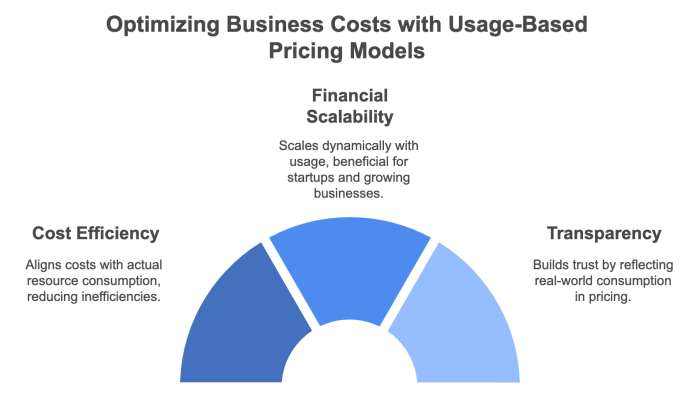

Quality of Experience (QoE) is a critical metric that goes beyond simple performance measurements like uptime and response time. In the Smart SaaS paradigm, QoE encompasses a holistic view of user satisfaction and system efficiency.
By continuously monitoring real‑time data, Smart SaaS platforms can make dynamic adjustments to improve service delivery. This includes optimizing response times during peak loads, reducing error rates, and gathering user feedback to drive iterative improvements. The focus on QoE ensures that the end user receives a personalized and efficient service, which is essential in today’s competitive digital landscape.
For more information on advanced analytics and personalization strategies, see our guide on building a successful SaaS business model.
QoE in the context of SaaS refers to how effectively a service meets or exceeds user expectations. It involves measuring various performance indicators such as system reliability, user engagement, and responsiveness under stress.
These metrics not only help in identifying service bottlenecks but also serve as a guide for ongoing improvements. Advanced QoE metrics include real‑time feedback on application performance and error rates, which can be used to fine‑tune operations and enhance the overall user experience.
Smart SaaS platforms enhance QoE by leveraging real‑time data analytics and adaptive algorithms to optimize performance continuously. They monitor critical metrics such as response times, error rates, and user satisfaction, and adjust system parameters dynamically to meet changing demands.
This approach ensures that even during periods of high usage, the service remains efficient and user-friendly. In addition, built‑in feedback loops allow the platform to learn from user interactions and continuously improve its features. For example, a SaaS application may adjust its interface based on user behavior patterns to ensure a smoother experience.
Explore further insights into advanced SaaS features in our post on SaaS Platforms: Key Features and Applications.
Smart SaaS is not limited to traditional business applications—it also plays a pivotal role in Internet of Things (IoT) ecosystems and smart city initiatives. For instance, in smart lighting management, sensors installed across urban areas continuously monitor ambient light and pedestrian movement.
This data is fed into a Smart SaaS platform that adjusts lighting levels automatically, optimizing energy usage and enhancing public safety. Similarly, IoT applications benefit from real‑time analytics that identify device malfunctions or predict maintenance needs. This level of operational intelligence not only drives efficiency but also significantly improves the user experience and reduces operational costs.


Smart SaaS is revolutionizing industries by transforming how software is delivered and consumed. By moving away from one‑size‑fits‑all subscription models and embracing usage‑based pricing, Smart SaaS applications offer unprecedented flexibility and cost efficiency.
These platforms leverage advanced data integration, real‑time analytics, and sophisticated QoE metrics to provide tailored solutions that enhance operational performance and customer satisfaction. Whether it’s managing smart lighting in cities, optimizing IoT sensor networks, or driving personalized eCommerce experiences, the evolution of Smart SaaS is driving innovation across all sectors.
As the digital landscape becomes increasingly competitive, adopting Smart SaaS solutions is not just an option—it’s a strategic imperative. Organizations that embrace these intelligent, adaptive platforms position themselves to respond quickly to changing market dynamics, reduce wasted resources, and achieve a superior user experience. For more strategies on achieving digital excellence, read our article on getting started with digital transformation.
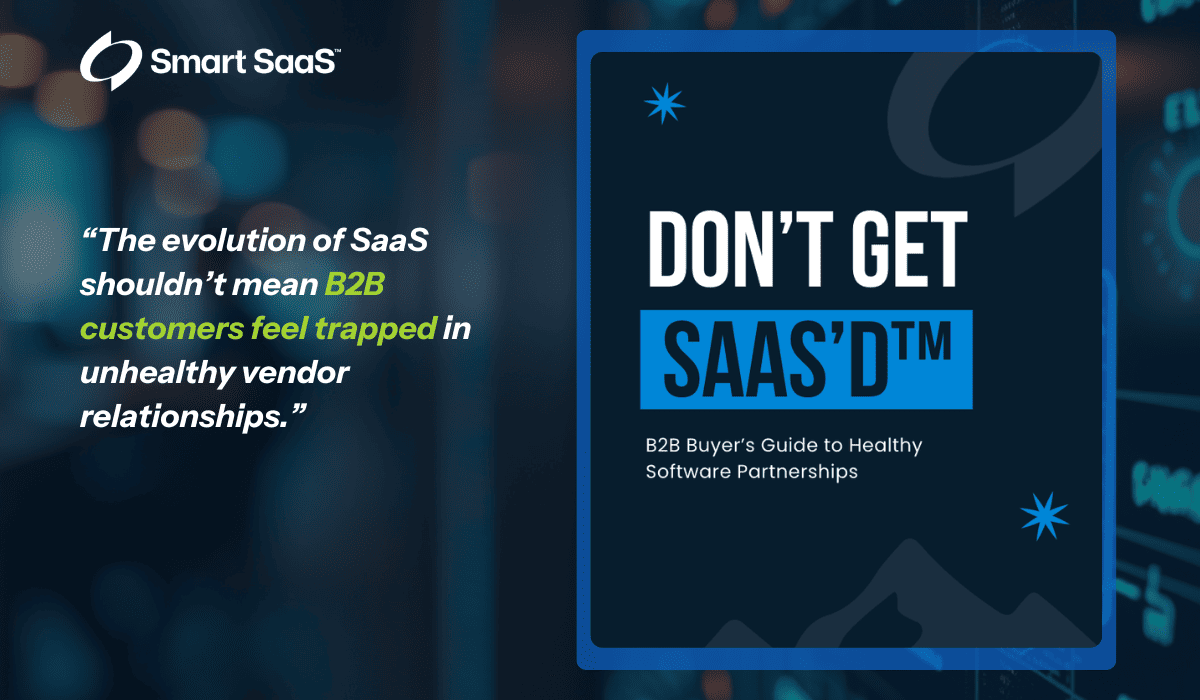
Ready to revolutionize your operations with adaptive, intelligent solutions? Explore our Smart SaaS offerings and discover how these innovative platforms can streamline processes, reduce costs, and enhance user experience in your industry.
For a comprehensive guide on leveraging Smart SaaS, download our free eBook, "Don't Get SaaS'd SaaS".
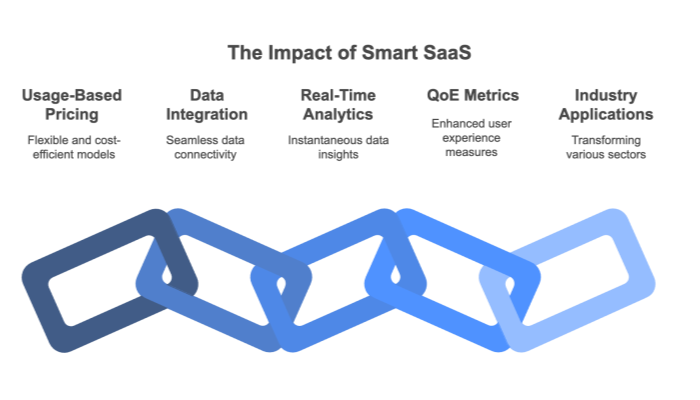

For more insights on SaaS innovation and digital transformation, check out these related articles: